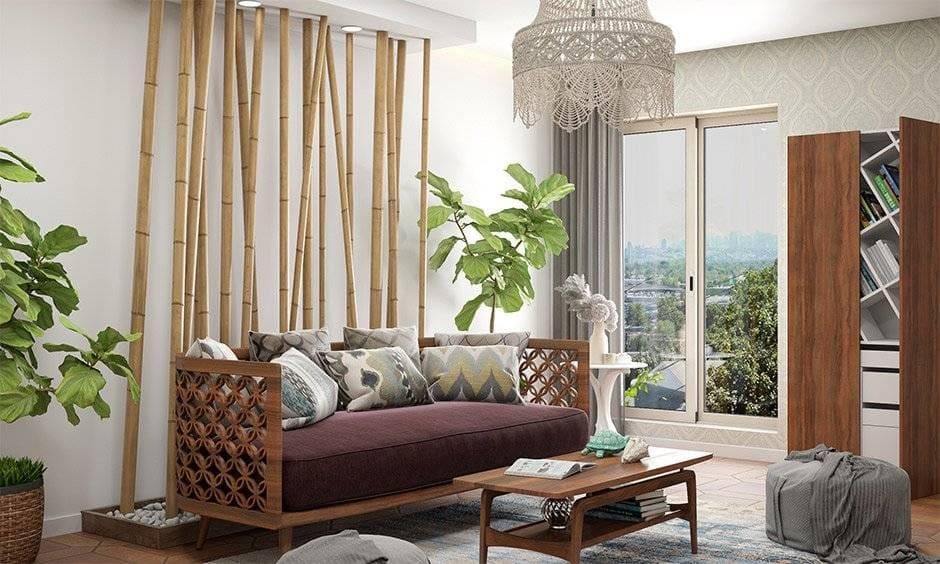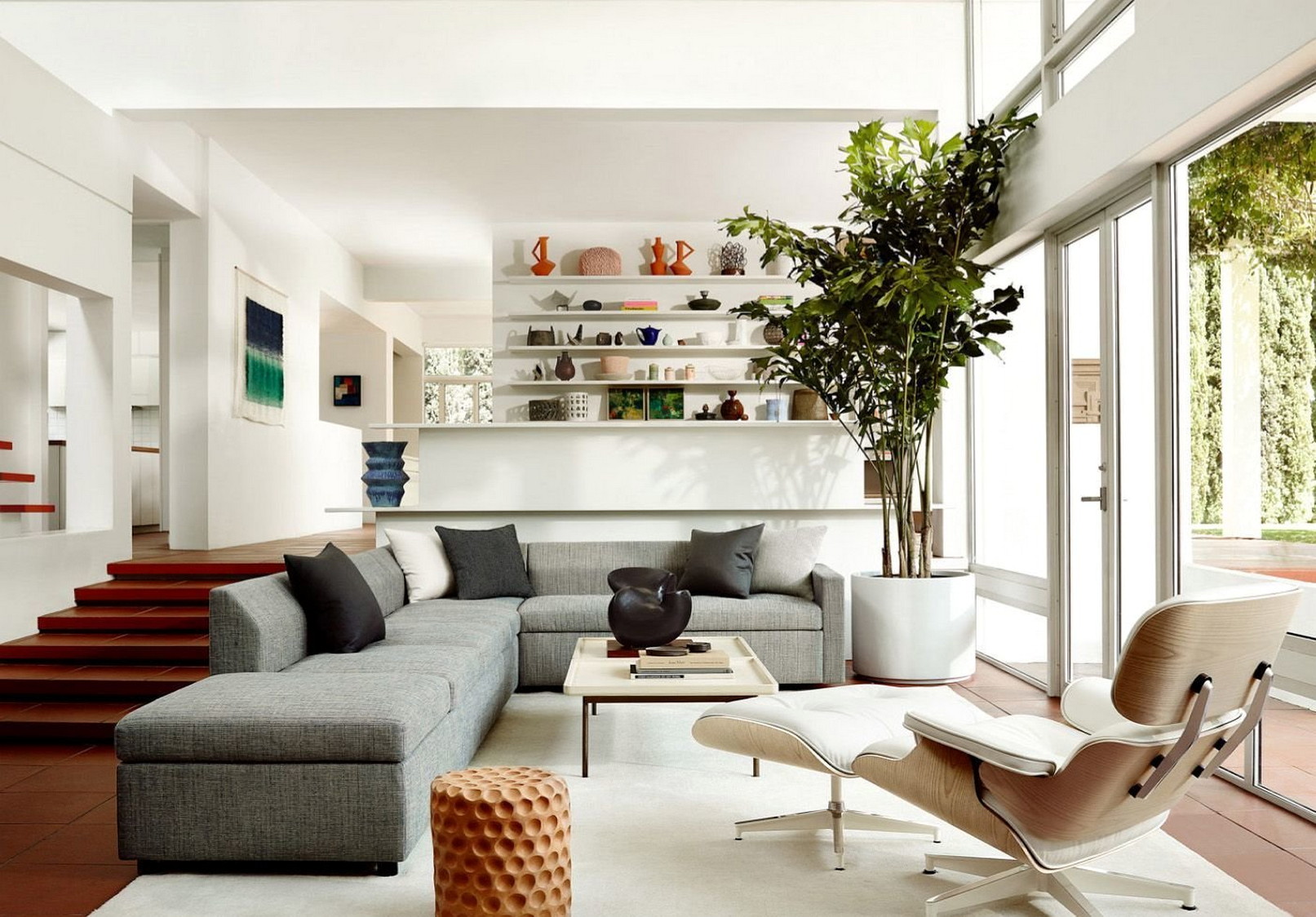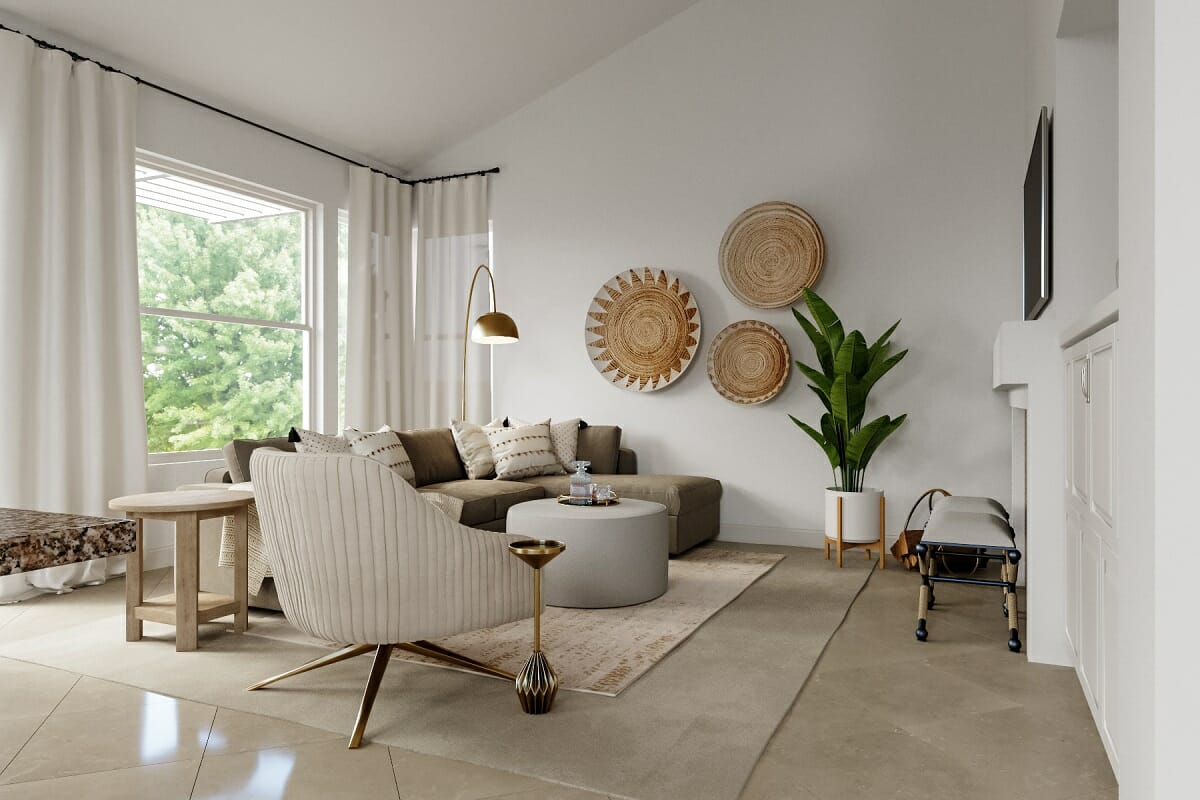Sustainable Materials and Resources

Creating a sustainable and eco-friendly interior design requires a conscious choice of materials that minimize environmental impact. From the source of the material to its production and disposal, every step leaves a footprint. Choosing sustainable materials is crucial in reducing this footprint and contributing to a healthier planet.
Environmental Impact of Building Materials
The construction industry is a major contributor to environmental problems, with significant impacts on deforestation, air and water pollution, and greenhouse gas emissions. Understanding the environmental impact of different building materials is essential for making informed decisions.
- Wood: While wood is a renewable resource, its sustainability depends on responsible forestry practices. Deforestation for timber can lead to habitat loss, soil erosion, and climate change. Choosing sustainably harvested wood certified by organizations like the Forest Stewardship Council (FSC) ensures that forests are managed responsibly.
- Concrete: Concrete production is a major source of greenhouse gas emissions, primarily from the burning of fossil fuels to produce cement. Additionally, concrete mining can cause land degradation and dust pollution. Using recycled concrete aggregates or low-carbon cement alternatives can significantly reduce the environmental impact of concrete.
- Steel: Steel production is energy-intensive and generates significant carbon emissions. However, steel is recyclable and can be reused multiple times. Choosing recycled steel can reduce the environmental impact compared to using virgin steel.
- Plastics: Plastics are derived from fossil fuels and are non-biodegradable, leading to environmental pollution. Using recycled plastics or bio-based plastics derived from renewable sources can help mitigate the impact of plastic use.
Sustainable and Eco-Friendly Materials
Many sustainable and eco-friendly alternatives to traditional building materials are available, offering a balance between aesthetics and environmental responsibility.
- Bamboo: Bamboo is a fast-growing, renewable resource that requires minimal water and fertilizer. It is a strong, durable material with excellent acoustic properties, making it suitable for flooring, furniture, and walls.
- Cork: Cork is harvested from the bark of cork oak trees without harming the tree. It is a natural, sustainable material with excellent insulation and sound-absorbing properties, making it ideal for flooring, wall coverings, and furniture.
- Recycled Glass: Recycled glass can be used to create beautiful and durable countertops, tiles, and decorative elements. This process reduces landfill waste and minimizes the need for new glass production.
- Reclaimed Wood: Reclaimed wood, salvaged from old buildings or structures, is a sustainable and eco-friendly option for flooring, furniture, and decorative accents. Using reclaimed wood reduces waste and preserves valuable resources.
Benefits of Locally Sourced Materials
Choosing locally sourced materials offers several environmental benefits:
- Reduced Transportation Emissions: Local sourcing reduces the distance materials need to be transported, minimizing the associated greenhouse gas emissions.
- Support Local Economy: Supporting local businesses and suppliers contributes to the local economy and creates jobs.
- Reduced Environmental Impact: Local sourcing often means using materials that are adapted to the local climate and environment, minimizing the need for transportation and processing.
Choosing Materials with Low VOC Emissions
Volatile organic compounds (VOCs) are emitted from some building materials and can contribute to indoor air pollution. Choosing materials with low VOC emissions is crucial for creating a healthy indoor environment.
- Look for Certifications: Look for certifications like GREENGUARD or UL GREENGUARD Gold, which indicate that materials meet low VOC emission standards.
- Choose Natural Materials: Natural materials like wood, cork, and bamboo generally have lower VOC emissions than synthetic materials.
- Ventilate Well: Proper ventilation helps to remove VOCs from the air. Ensure adequate ventilation during and after construction.
Water Conservation and Management

Water is a precious resource, and its conservation is crucial for a sustainable future. Implementing water-efficient practices in interior design can significantly reduce water consumption and contribute to a greener environment.
Water-Efficient Fixtures and Appliances
Water-efficient fixtures and appliances play a vital role in minimizing water usage within homes. These devices are designed to conserve water without compromising performance.
- Low-flow showerheads: These showerheads use less water while maintaining a satisfying shower experience. They typically reduce water flow to 2.5 gallons per minute, compared to traditional showerheads that use 5 gallons per minute. This can result in significant water savings over time.
- Water-efficient toilets: Toilets account for a significant portion of household water consumption. Low-flow toilets use less water per flush, typically 1.28 gallons, compared to older models that use 3.5 gallons. Choosing these toilets can significantly reduce water usage in the bathroom.
- Water-saving faucets: Similar to showerheads, water-saving faucets are designed to reduce water flow without compromising water pressure. These faucets can significantly reduce water usage in sinks and kitchen areas.
- High-efficiency washing machines and dishwashers: These appliances are designed to use less water and energy during operation. Choosing these appliances can significantly reduce water consumption for laundry and dishwashing tasks.
Rainwater Harvesting Systems, Sustainable and eco-friendly interior design ideas
Rainwater harvesting is a sustainable practice that collects and stores rainwater for various uses. This method can significantly reduce reliance on municipal water supplies, conserving water resources and reducing water bills.
- Rain barrels: Rain barrels are simple and effective rainwater harvesting systems. They collect rainwater from rooftops and store it for later use in watering gardens, washing cars, or flushing toilets.
- Cisterns: Cisterns are larger underground tanks that can store significant amounts of rainwater. They are suitable for larger homes and can provide a reliable source of water for various purposes.
- Rainwater infiltration systems: These systems direct rainwater into the ground, replenishing groundwater reserves and reducing surface runoff. This method helps improve soil moisture and reduces the risk of flooding.
Greywater Recycling Methods
Greywater is wastewater from sinks, showers, and washing machines that is not contaminated with sewage. Recycling greywater can significantly reduce water consumption and promote sustainability.
- Greywater irrigation systems: These systems use greywater to irrigate lawns, gardens, and landscaping. Greywater can provide a valuable source of nutrients for plants and reduce the need for potable water.
- Greywater filtration systems: These systems filter greywater to remove contaminants and make it suitable for irrigation or other uses. Filtration systems can ensure that the recycled water is safe for plants and the environment.
Landscaping with Native Plants
Choosing native plants for landscaping can significantly reduce water consumption. Native plants are adapted to local climates and require minimal watering, reducing the need for irrigation.
- Drought-tolerant plants: Many native plants are naturally drought-tolerant, requiring minimal watering even during dry seasons. These plants can thrive with minimal water input, reducing water consumption.
- Low-maintenance landscaping: Choosing native plants can reduce the need for frequent watering and maintenance, saving time and resources. This approach promotes a sustainable and low-maintenance landscape.
Designing Outdoor Spaces for Water Conservation
Designing outdoor spaces that minimize water runoff and promote water infiltration can contribute to water conservation and reduce the impact on the environment.
- Permeable paving: Using permeable paving materials like gravel, pavers, or porous concrete allows rainwater to infiltrate the ground instead of running off. This reduces surface runoff and replenishes groundwater reserves.
- Rain gardens: Rain gardens are designed to capture and absorb rainwater runoff from rooftops or paved areas. They are planted with water-tolerant plants that thrive in moist conditions.
- Swales: Swales are shallow ditches that are designed to capture and direct rainwater runoff. They can be planted with native plants to enhance water infiltration and create a natural drainage system.
Sustainable Interior Design Elements

Sustainable interior design goes beyond just choosing eco-friendly materials. It involves thoughtfully incorporating elements that minimize environmental impact and promote well-being. This includes selecting furniture styles that are durable and timeless, opting for natural and sustainable materials, and prioritizing healthy indoor air quality.
Sustainable Furniture Styles
Sustainable furniture styles are often characterized by their durability, functionality, and timeless appeal, minimizing the need for frequent replacements. Here are some popular sustainable furniture styles:
| Style | Characteristics | Examples |
|---|---|---|
| Mid-Century Modern | Clean lines, simple shapes, and a focus on functionality. | Eames Lounge Chair, Barcelona Chair |
| Scandinavian | Light woods, natural materials, and a minimalist aesthetic. | Hans J. Wegner's CH24 Wishbone Chair, Arne Jacobsen's Egg Chair |
| Minimalist | Simple, uncluttered designs, and a focus on functionality. | Muji furniture, Ikea's simple and functional designs |
Eco-friendly Furniture Materials
Sustainable furniture manufacturers often utilize recycled materials or sustainably harvested wood sources to reduce their environmental footprint.
- Recycled Materials: Furniture made from recycled materials like plastic, metal, and glass minimizes waste and reduces the demand for new resources. Examples include furniture made from recycled plastic bottles, reclaimed wood, and recycled metal.
- Sustainable Wood Sources: Furniture crafted from sustainably harvested wood sources, like FSC-certified forests, ensures that forests are managed responsibly for future generations.
Natural Textiles
Natural textiles like linen, cotton, and wool offer a sustainable and breathable alternative to synthetic fabrics.
- Linen: Linen is a strong and durable fabric that is naturally resistant to wrinkles and fading. It is also breathable and hypoallergenic, making it a comfortable choice for upholstery and bedding.
- Cotton: Cotton is a soft and absorbent fabric that is widely used for upholstery, curtains, and bedding. Look for organic cotton, which is grown without the use of harmful pesticides and fertilizers.
- Wool: Wool is a natural insulator that is warm in the winter and cool in the summer. It is also durable and naturally flame-retardant, making it a good choice for upholstery and rugs.
Non-toxic Paints and Finishes
Using non-toxic paints and finishes is crucial for creating a healthy indoor environment.
"Non-toxic paints and finishes minimize indoor air pollution and protect the health of occupants."
- Low-VOC Paints: Look for paints labeled "low-VOC" or "zero-VOC," which contain minimal amounts of volatile organic compounds (VOCs). VOCs can contribute to indoor air pollution and health problems.
- Natural Finishes: Opt for natural finishes like beeswax, linseed oil, and tung oil, which are non-toxic and provide a durable and protective coating.
Reducing Waste and Promoting Recycling

In the realm of sustainable interior design, minimizing waste and embracing recycling practices is paramount. By adopting eco-conscious approaches, we can reduce our environmental footprint and create a more sustainable living space.
Reusable and Sustainable Packaging
Choosing furniture and home decor items with reusable and sustainable packaging is a crucial step towards reducing waste. Many manufacturers are now adopting eco-friendly packaging materials such as recycled cardboard, biodegradable plastics, and reusable containers. Opting for products with minimal packaging or packaging made from recycled materials significantly contributes to reducing waste generation.
Upcycling Techniques
Upcycling transforms old furniture and objects into new pieces, breathing life into discarded items and reducing waste. This creative process involves repurposing materials and giving them a new function, resulting in unique and sustainable pieces.
- Repainting and Refinishing: Giving old furniture a fresh coat of paint or applying a new finish can completely transform its appearance, extending its lifespan and preventing it from ending up in a landfill.
- Adding New Upholstery: Replacing worn-out upholstery with new fabric can rejuvenate old chairs, sofas, and ottomans, giving them a new lease on life.
- Repurposing Old Doors: Old doors can be repurposed into headboards, shelves, or even decorative wall panels, adding a unique touch to the interior.
Composting Food Waste and Organic Materials
Composting food waste and organic materials, such as yard trimmings, is a sustainable practice that reduces waste and enriches the soil. Home composting systems are readily available and can be easily set up in backyards or even indoors.
Proper Waste Sorting and Recycling Practices
Proper waste sorting and recycling practices play a vital role in reducing the amount of waste that ends up in landfills. Implementing a clear waste sorting system in the home encourages responsible disposal and promotes recycling.
- Designated Bins: Having separate bins for different waste categories, such as recyclables, compostables, and general waste, facilitates proper sorting and encourages recycling.
- Recycling Guidelines: Familiarizing yourself with local recycling guidelines and ensuring that only recyclable materials are placed in the designated recycling bin is crucial.
- Composting: Setting up a composting system for food waste and organic materials allows you to reduce the amount of waste going to landfills and create nutrient-rich compost for your garden.
Sustainable Interior Design Trends: Sustainable And Eco-friendly Interior Design Ideas

The world of interior design is undergoing a significant transformation, driven by a growing awareness of environmental responsibility and a desire to create spaces that are both beautiful and sustainable. This shift is reflected in the emergence of several key trends that are shaping the future of interior design.
Biophilic Design
Biophilic design is a concept that emphasizes the connection between humans and nature. It aims to incorporate natural elements and greenery into interior spaces, creating a sense of well-being and enhancing the overall experience. This approach is becoming increasingly popular as people seek to bring the calming and restorative qualities of nature into their homes and workplaces.
- Living Walls and Green Roofs: These features introduce vertical greenery into interior spaces, providing a visual connection to nature and improving air quality. A living wall, for instance, is a vertical garden system that can be installed indoors or outdoors, creating a dynamic and vibrant feature. Green roofs, on the other hand, are planted on rooftops, offering numerous benefits such as reducing heat island effect, improving stormwater management, and enhancing biodiversity.
- Natural Materials: The use of natural materials such as wood, bamboo, stone, and wool is a key element of biophilic design. These materials have a warm and inviting feel, promoting a sense of connection to the natural world. Sustainable sourcing and responsible forestry practices are essential to ensure the long-term sustainability of these materials.
- Natural Light and Ventilation: Maximizing natural light and ventilation is crucial in biophilic design. Large windows and skylights allow for ample sunlight to penetrate interior spaces, reducing the need for artificial lighting. Proper ventilation systems ensure fresh air circulation, improving indoor air quality and promoting a sense of well-being.
Circular Economy in Interior Design
The concept of a circular economy is gaining momentum in the design world, encouraging designers to rethink the lifecycle of products and materials. It emphasizes reducing waste, promoting resource efficiency, and creating closed-loop systems where materials are reused and recycled.
- Upcycling and Repurposing: Instead of discarding old furniture and materials, designers are increasingly exploring ways to upcycle and repurpose them into new and innovative pieces. This approach reduces waste and creates unique and sustainable designs.
- Modular and Customizable Furniture: Modular furniture systems allow for flexibility and adaptability, enabling users to easily rearrange and reconfigure pieces to suit their changing needs. This approach reduces the need for constant replacements and promotes longevity.
- Sustainable Procurement Practices: Designers are increasingly partnering with suppliers who prioritize sustainable sourcing, ethical production, and responsible waste management. This ensures that the materials used in interior design projects are sourced from reliable and environmentally conscious sources.
Innovative Design Solutions
The pursuit of sustainability is driving innovation in interior design, leading to the development of new materials and technologies that offer both aesthetic appeal and environmental benefits.
- Bio-Based Materials: Bio-based materials, derived from renewable plant sources, are gaining popularity as sustainable alternatives to traditional materials. These materials offer a wide range of applications, from flooring and wall coverings to furniture and textiles. Examples include bamboo, cork, hemp, and mycelium, which is a mushroom-based material.
- Recycled and Upcycled Materials: The use of recycled and upcycled materials is becoming increasingly common in interior design. These materials, derived from pre-consumer or post-consumer waste, offer a sustainable solution while adding unique character to interior spaces. Examples include recycled plastic tiles, reclaimed wood, and upcycled textiles.
- Smart Home Technologies: Smart home technologies are increasingly being integrated into interior design, offering energy-efficient solutions for lighting, heating, and cooling. These technologies allow for personalized control over energy consumption, reducing waste and optimizing comfort.
Sustainable Interior Design Projects
Numerous inspiring examples of sustainable interior design projects demonstrate the power of design to create beautiful and environmentally responsible spaces.
- The Living Building Challenge: This ambitious certification program sets rigorous standards for sustainable design, requiring projects to meet stringent criteria for energy efficiency, water conservation, and material selection. Certified Living Buildings are designed to be net-zero energy and water, producing more energy and water than they consume.
- The Green Building Council: The Green Building Council is a global organization that promotes sustainable building practices through its LEED (Leadership in Energy and Environmental Design) certification program. LEED certification recognizes projects that meet specific standards for energy efficiency, water conservation, and material selection.
- The WELL Building Standard: The WELL Building Standard focuses on creating healthy and sustainable interior spaces that promote human well-being. It addresses factors such as air quality, water quality, lighting, and acoustics, ensuring that buildings support the health and productivity of occupants.
Popular Questions
Sustainable and eco-friendly interior design ideas - What are some common sustainable materials used in interior design?
Sustainable materials like bamboo, cork, recycled glass, reclaimed wood, and natural textiles like linen, cotton, and wool are popular choices. They offer durability, beauty, and a lower environmental footprint compared to traditional materials.
How can I reduce energy consumption in my home through interior design?
Use energy-efficient lighting and appliances, implement passive solar design, and ensure proper insulation to minimize reliance on artificial heating and cooling systems. Smart home technologies can also help optimize energy usage.
What are some water-saving techniques for sustainable homes?
Install water-efficient fixtures and appliances, consider rainwater harvesting systems, and choose native plants for landscaping that require minimal watering. You can also design outdoor spaces that promote water infiltration and minimize runoff.
How can I incorporate biophilic design into my home?
Biophilic design brings nature indoors by incorporating natural elements like plants, wood, and stone. It creates a sense of connection to the natural world and improves well-being. You can achieve this by incorporating indoor gardens, using natural materials, and maximizing natural light.
